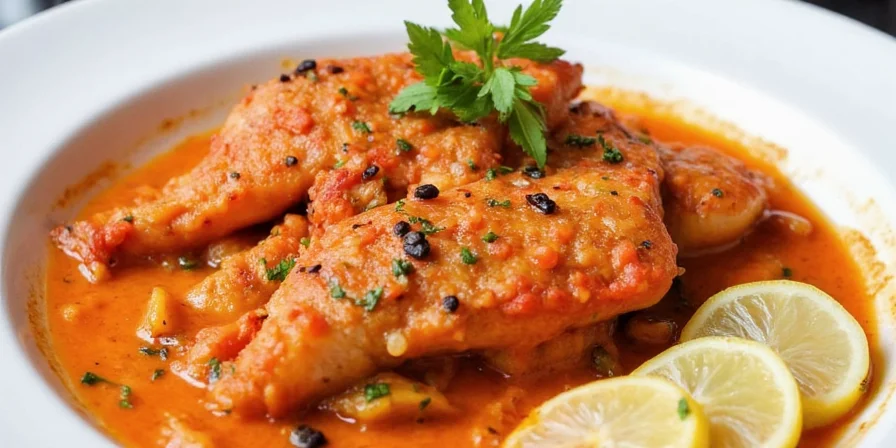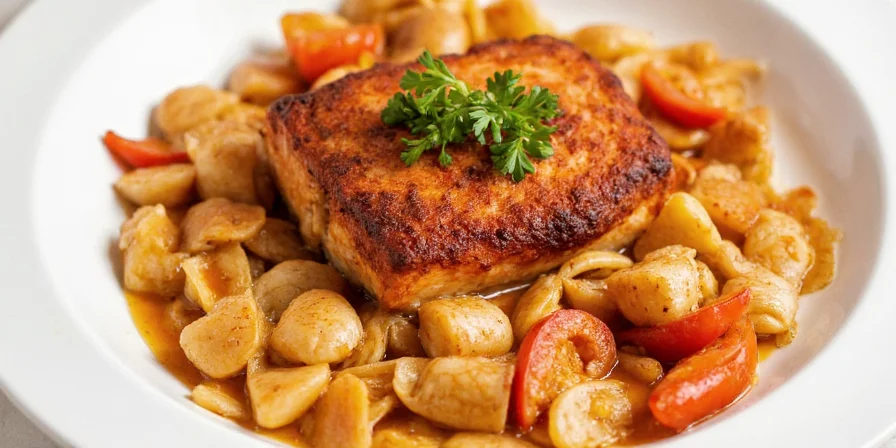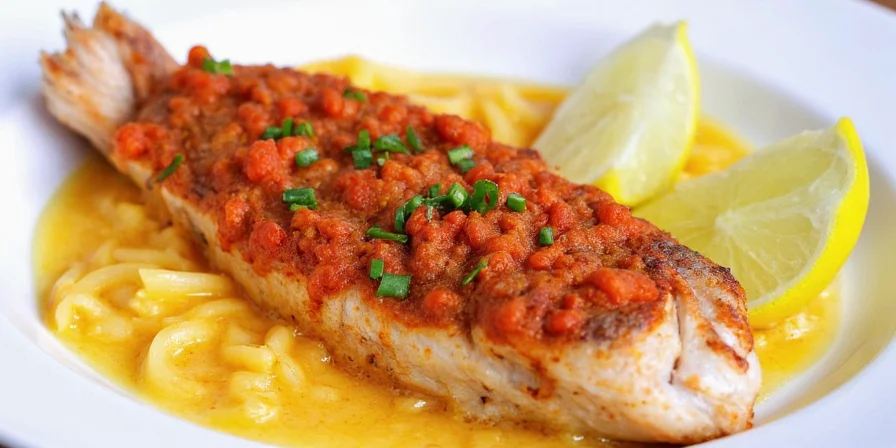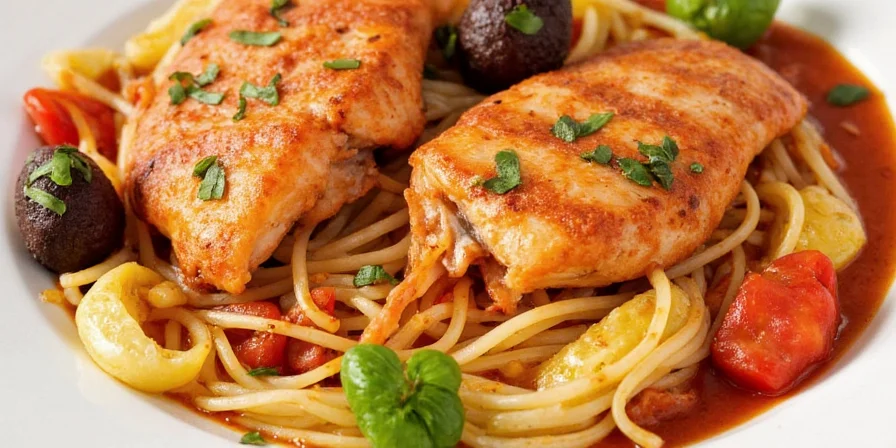Sicilian Fish: The Spicy Mediterranean Secret That’ll Make Your Taste Buds Dance!
Table of Contents
- Introduction: What Makes Sicilian Fish So Special?
- The Spice Palette Behind Sicilian Fish Dishes
- Top 5 Sicilian Fish Recipes You Need to Try
- Pro Tips: How to Cook Like a True Sicilian Chef
- Spice & Wine Pairings: Elevate Your Meal
- Myth-Busting: Is Sicilian Fish Always Spicy?
- Conclusion: Embrace the Flavor, Embrace the Heat
Introduction: What Makes Sicilian Fish So Special?
Sicily—a sun-drenched island where the sea whispers secrets of flavor to every cook—has long been a melting pot of culinary influences. From ancient Greek settlers to Arab traders, each culture left behind its own unique touch on Sicilian cuisine. Nowhere is this more apparent than in Sicilian fish dishes, which marry bold flavors, fresh seafood, and a liberal use of spices that dance between warmth and heat.

If you’ve ever tasted pesce alla ghiotta or sarde a beccafico, you know what we’re talking about. But why does Sicilian fish stand out from other Mediterranean cuisines? Let’s dive deep into the spice-laden waters of Sicily and find out.
The Spice Palette Behind Sicilian Fish Dishes
Unlike the heavy use of garlic and herbs found in Northern Italian cuisine, Sicilian cooking relies heavily on a handful of key spices and ingredients that bring brightness and heat. Here's a quick breakdown:
| Spice/Ingredient | Flavor Profile | Typical Use in Sicilian Fish |
|---|---|---|
| Pecorino Pepato | Sharp cheese with black peppercorns | Crumble over grilled fish |
| Black Pepper | Earthy, spicy | Used liberally in fish stews |
| Chili Flakes (Peperoncino) | Fiery heat with a slight fruitiness | Add punch to pasta con le sarde |
| Cinnamon | Warm, sweet-spicy | Surprisingly common in sweet-savory dishes |
| Pine Nuts & Raisins | Nutty sweetness | Arab-inspired contrast in savory dishes |

Top 5 Sicilian Fish Recipes You Need to Try
- Pesce alla Ghiotta: A rustic dish featuring baked fish with tomatoes, olives, capers, and a generous sprinkle of peperoncino.
- Sarde a Beccafico: Sardines rolled up with breadcrumbs, raisins, pine nuts, and mint—named after the bird that once feasted on figs!
- Bottarga Pasta: Salt-cured tuna roe grated over pasta, adding an umami-packed salty kick.
- Tuna Carpaccio: Thinly sliced raw tuna dressed with citrus, chili, and olive oil—a refreshing summer treat.
- Zuppa di Pesce: A hearty fish soup loaded with local catch, red chili, and a splash of white wine.

Pro Tips: How to Cook Like a True Sicilian Chef
You don’t need a villa overlooking the Tyrrhenian Sea to make authentic Sicilian fish dishes at home. Just follow these golden rules:
- Use the freshest fish possible. If it doesn’t smell like the ocean, leave it!
- Don’t skimp on the chili. A little peperoncino goes a long way in bringing depth and heat.
- Toasting spices first enhances their aroma. Toast fennel seeds or cumin briefly before adding them to your pan.
- Balance sweetness and heat. Sicilian cooks love contrasts—think raisins + chili or lemon + chili.
- Let your sauces simmer slowly. Whether it’s a tomato-based sauce or a fish stew, patience pays off.

Spice & Wine Pairings: Elevate Your Meal
Sicilian wines are often as bold and vibrant as their dishes. Here’s how to match your fiery fish creations with the perfect pour:
| Dish | Spice Level | Recommended Wine |
|---|---|---|
| Sarde a Beccafico | Mild to medium | Nero d’Avola |
| Zuppa di Pesce | Medium-hot | Etna Bianco |
| Tuna Carpaccio with Chili Oil | Medium-high | Frappato |
| Pasta con le Sarde | High | Grillo |
| Pesce alla Ghiotta | Medium | Catarratto |

Myth-Busting: Is Sicilian Fish Always Spicy?
Short answer: No! Long answer: It depends on who’s cooking—and where.
Sicily is a large island, and regional variations exist even within its own borders. For instance, dishes from Palermo might lean sweeter and nuttier due to Arab influence, while those near Catania tend to embrace more heat from chilies.
The key point? Sicilian cuisine thrives on contrast—not just heat. Sweet and sour, crunchy and soft, mild and spicy—these are all fair game. So if you’re not into spice, you can still enjoy many traditional Sicilian fish recipes by simply toning down the chili.
Conclusion: Embrace the Flavor, Embrace the Heat
There’s something undeniably magical about Sicilian fish. Whether it’s the salt air kissing your skin or the zing of peperoncino awakening your palate, Sicilian seafood dishes offer a taste of the Mediterranean soul.

So next time you're craving a change from the usual salmon or cod routine, give one of these Sicilian fish recipes a try. With the right blend of spices, you’re not just cooking—you’re traveling back in time to a land where flavors tell stories and every bite feels like a celebration.
Final Tip: Don’t forget to store your spices properly! Heat and light can ruin their potency. Keep them cool, dry, and out of direct sunlight for maximum flavor impact.












 浙公网安备
33010002000092号
浙公网安备
33010002000092号 浙B2-20120091-4
浙B2-20120091-4